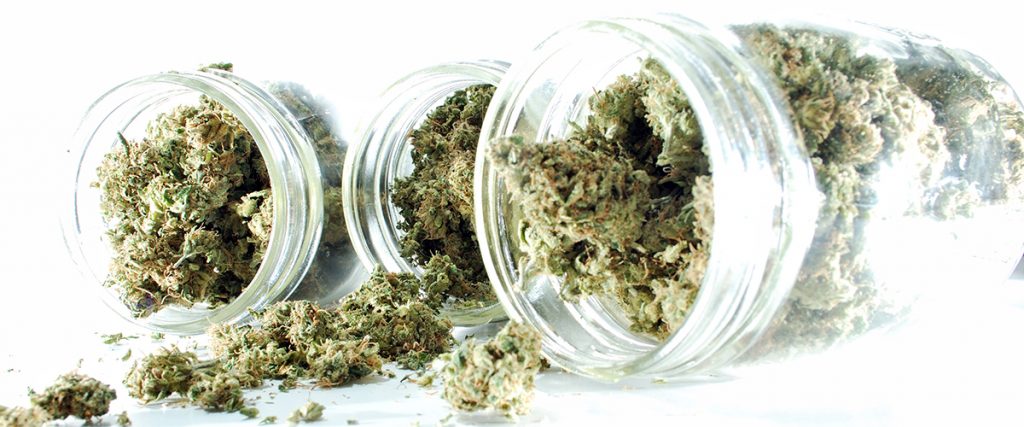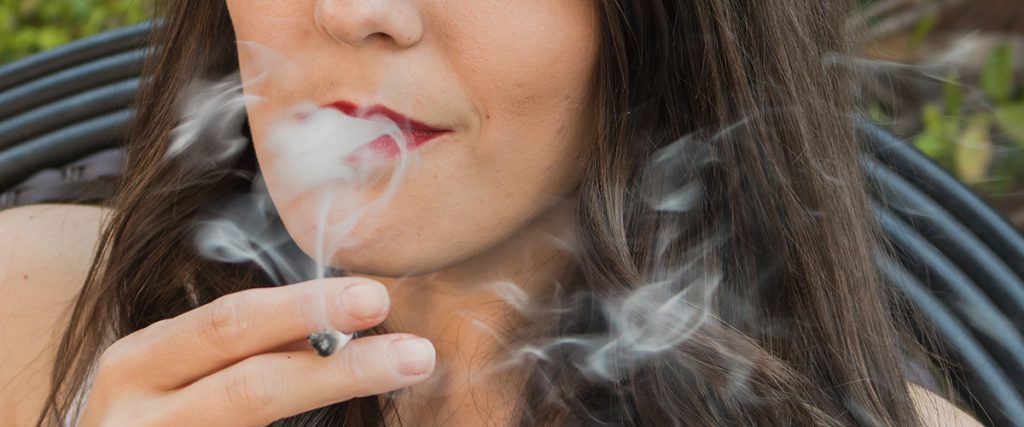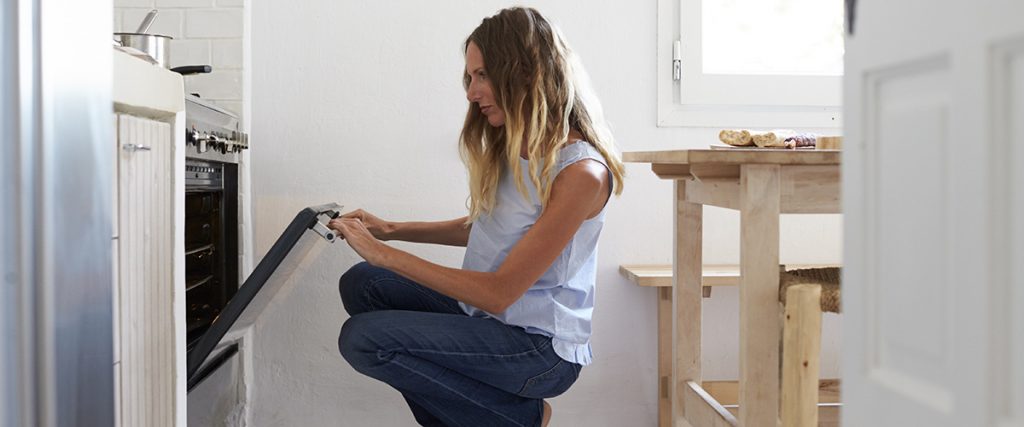What happens if you eat a bag of fresh or cured marijuana? Nothing resembling a high – that’s one clue why decarboxylation is so important to getting the most out of your marijuana.
Whether you’re interested in making marijuana-infused edibles or your own cannabis tinctures, you won’t be able to experience the full effects of the marijuana you consume unless you decarboxylate it first.
Decarboxylation is a crucial process for cannabis consumers, particularly those using marijuana for medical purposes and rely on the plant’s active compounds, because it alters the cannabinoids in cannabis to better interact with the body. Here’s more on why cannabis decarboxylation is so important:
What is Decarboxylation?
Decarboxylation is the process of heating cannabis to activate the compounds within the plant.
Found in the trichomes of raw marijuana flowers are cannabinoid acids, inactive cannabinoids that have an extra carboxyl ring attached to their molecular chain.
When heated, or decarboxylated, the molecular structure of these cannabinoid acids shift as a carboxyl group is removed, converting the compounds into an active form that interacts with the body in a different way. When the cannabinoids in cannabis lose their carboxyl group (-COOH), it is released as CO2, with the remaining hydrogen atom retained.
Once the cannabinoids are activated, they can freely and directly interact with the endocannabinoid system’s receptors in the brain and throughout the body to elicit their effects, including the intoxicating effects of THC. Without being decarboxylated, THC is present as THCA, its non-intoxicating acidic version.
There are more than 100 cannabinoids so far discovered in cannabis. For them to be able to interact with the body in the manner that cannabis consumers typically rely on and expect – including THC’s telltale euphoria – cannabinoids have to undergo decarboxylation’s chemical reaction.

Why is Decarboxylation Important?
Decarboxylation is a necessary process for consuming marijuana in edibles and tinctures because it activates the plant material’s variety of cannabinoids – including tetrahydrocannabinol (THC) and cannabidiol (CBD).
Fresh, unheated marijuana flower does contain cannabinoid acids, but until they’re heated up, these compounds remain in an inactive form.
While there are benefits to consuming raw cannabis and its cannabinoid acids, vitamins, and nutrients, doing so will not cause any psychoactive effect. Juicing of cannabis leaves and consuming raw cannabis buds are popular among those looking to take advantage of cannabinoid acids.
Specifically, decarboxylation converts tetrahydrocannabinolic acid (THCA), a non-psychoactive cannabinoid acid, into THC, the compound most commonly associated with marijuana that causes a euphoric high. It also converts cannabidiolic acid (CBDA) into CBD, a sought-after cannabinoid in recent years.
THC and CBD act as partial agonists or agonists of the endocannabinoid system’s cannabinoid receptors – CB1 and CB2. The endocannabinoid system is a regulatory network responsible for regulating many of the body’s functions – including sleep, mood, appetite, and pain and immune response.
This interaction between the activated cannabinoids and cannabinoid receptors alters the release of neurotransmitters in the brain, yielding a host of effects. THC’s psychotropic effects, for example, come about because it activates brain CB1 receptors.
This is why for medical marijuana patients who rely on the effects of these active compounds, decarboxylation is a crucial step.
What Causes Decarboxylation?
Decarboxylation of marijuana occurs when at least one of the following two things happen. Partial decarboxylation occurs when the flower naturally dries and ages during curing. Decarboxylation also occurs when the marijuana plant material is exposed to heat.
If you were to leave your marijuana material out in the open, over time the cannabinoid acids would gradually convert into their active forms before eventually degrading. Drying and curing marijuana flower over time also triggers partial decarboxylation.
You can also force decarboxylation by heating your cannabis. Marijuana plant material needs to be exposed to a temperature of at least 220 degrees F for about 30 minutes to fully decarboxylate. This will allow the cannabinoids to decarb without vaporizing them. If you make edibles, the internal heat of your marijuana-infused baked goods likely won’t reach this temperature, which is why many advise that flower needs to be decarboxylated even before it is added to cooked foods or used to make cannabutter.
Due to exposure to high temperatures, smoking, dabbing, or vaporizing marijuana instantaneously decarboxylates cannabinoids, making them active in the smoke or vapor, so they can quickly go to work once they’re absorbed through inhalation.

How Do You Decarboxylate Your Marijuana?
Whether you grow your own marijuana, or have purchased marijuana flower from your local dispensary, you can easily decarboxylate it with the help of a baking sheet and your home oven. Here’s a full list of what you’ll need and a step-by-step explanation of how to decarboxylate your marijuana.
You’ll need:
- Marijuana flower
- Baking sheet
- Parchment paper
- Grinder
- Oven
How to decarboxylate your marijuana, step-by-step:
- Preheat your oven to 250 degrees F and line your baking sheet with parchment paper.
- While the oven heats, break your marijuana flower into smaller pieces.
- Spread the flower out on the parchment paper so that it’s in a single layer.
- Place the baking sheet in the oven. Cook for 30-45 minutes, stirring the marijuana flower every 10 minutes or so.
- Once the marijuana starts to darker in color, remove the baking sheet from the oven and set aside to let the activated flower cool.
- Use the grinder or a food processor to coarsely grind the flower. Store the cannabis in an airtight container until ready to use.
Pro Tip: While you may be tempted to cook the flower at higher temperatures, opting for low-temperature heat helps protect the integrity of the plant’s compounds and prevents a loss of potency.
Temperatures higher than 310 degrees to 400 degrees F will compromise the various cannabinoids, and burn away the marijuana’s terpenes, the oils that work synergistically with cannabinoids and give cannabis its unique flavor and scent.
Once your cannabis is decarboxylated, you can consume it in a number of ways. Because the cannabinoids and terpenes have been preserved in the decarboxylation process since we used low heat, you can still vape and smoke your marijuana. Some even promote decarbing marijuana before vaping and even smoking it.
Your decarboxylated cannabis can also be used to infuse recipes with marijuana or make cannabutter. You can find our cannabutter recipe on our Cannabis 101 page. You can also use your decarbed cannabis to create cannabis tinctures.

Learn More about Marijuana
More and more, people are becoming interested in marijuana. We cover topics like what it takes to get a medical marijuana card, as well as how to properly grow, cure, and consume cannabis.
You can learn more about medical and recreational marijuana by visiting our Cannabis 101 page.
[Read More ...]
Originally posted on Decarboxylation: What is It, What Does It Mean for Your Marijuana, How Do You Do It at Home via George Scorsis Medical Marijuana News
No comments:
Post a Comment